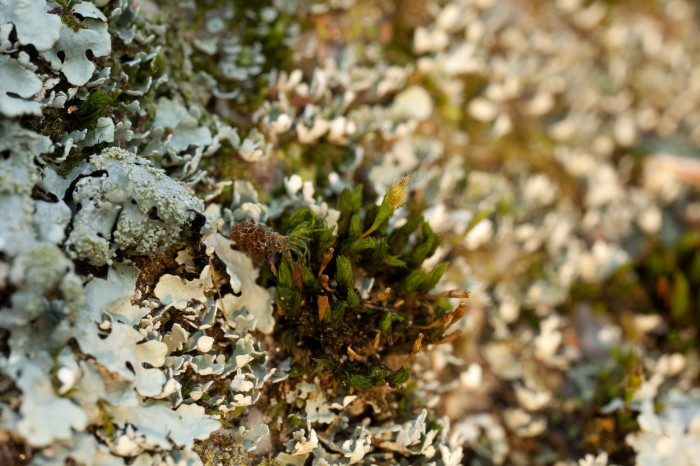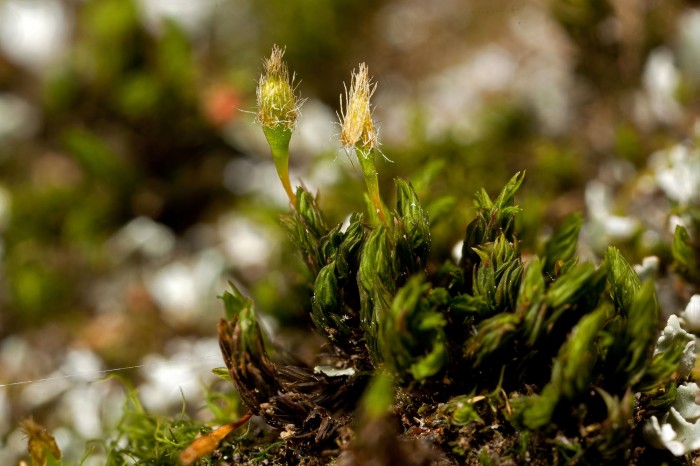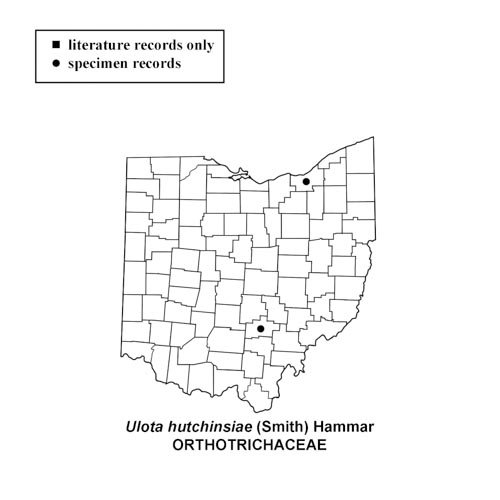Ulota hutchinsiae
“stone ulota”

Ulota hutchinsiae at Camp Oti-Okwa in Hocking County, Ohio. April 30, 2011.

Ulota hutchinsiae at Camp Oti-Okwa in Hocking County, Ohio. April 30, 2011.
How to recognize stone ulota: Ulota hutchinsiae grows in tufts, mainly on non-calcareous rocks. Unlike the much more common U. crispa (which grows on bark), the leaves are only slightly contorted when dry, and its leaves are shorter (1.4-2 mm vs 2-3mm). In addition the leaf cells of this moss are smooth or only slightly uni-papillose. It could be mistaken for another saxicolous (rock-growing) species, Orthotrichum anomalum, but O. anomalum always grows on calcareous rocks, and also differs in various features of the sporophyte (i.e., the calyptra is much hairier in rock-growing Ulota).
Where to find stone ulota: Ulota hutchinsiae is rare in Ohio, known from only two widely separated counties where sandstone rocks are prevalent.

